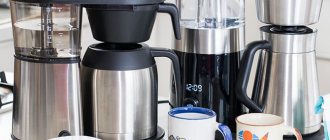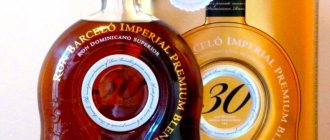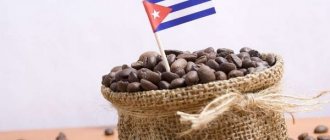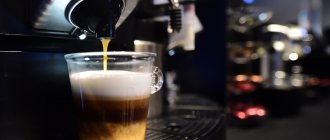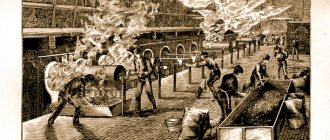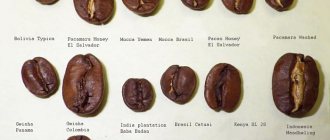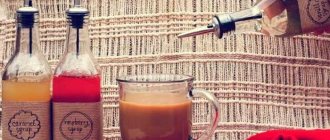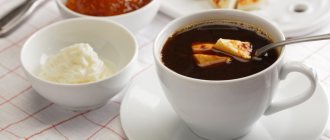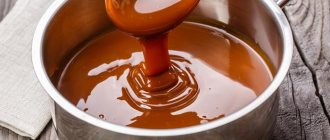What is mocha
Most people who visit coffee shops have tried mocha at least once in their lives. However, despite its widespread use, there is confusion surrounding the name of this drink.
Similar concepts
There are several related concepts:
- Mocha (in English can be written as mokka, mocca, mokas) is the name of an elite and expensive variety of coffee - Arabica coffee with small beans.
- Moka (la moka) - invented in the twentieth century. in Italy, a geyser coffee maker made of stainless steel and aluminum, in which water is heated by fire and rises from bottom to top from one container to another, flowing through a filter with ground coffee.
- Mocha is an espresso-based drink with the addition of milk and cocoa powder. You could say it's a latte made with cocoa. It is often topped with whipped cream.
Origin story
The history of the mocha variety begins in the 17th century, when, after the anti-Ottoman uprising, the Yemeni state arose, which began to develop economically, turning into a busy trading point transporting products to Europe. One of the goods was coffee, which quickly took root in European countries.
Under the reign of Sheikh Shaddi, coffee plantations began to rapidly expand in Moha, a Yemeni port city. Trade in new goods became so active that it became the main driving force for the development of the state’s economy. The name of the city has become famous in many countries around the world. It read “Mocha,” which is also the name of the coffee variety. After the death of Sheikh Shaddi, a mosque was erected near his burial place, and his name began to be mentioned in prayers as the patron of Arab coffee houses.
The mocha drink appeared thanks to the fact that cafe visitors in the 70s and 80s. the espresso seemed overly bitter. The baristas decided to remedy the situation by adding cream and cocoa to the coffee. Most experts believe that the birthplace of this cocktail is the USA.
Origin of Mocca coffee
The country that pioneered the drink was Ethiopia. One day, an African shepherd noticed that his goats remained cheerful even after long walks. At the same time, they all the time feasted on beans from coffee trees. Then the shepherd decided to test their effect on himself and noted that the grains did an excellent job of combating drowsiness and increasing efficiency. Soon coffee began to be consumed not only in Africa, and the area for growing coffee trees spread to Yemen.
This variety owes its name to the city of Moja, which for a long time had a monopolist in the cultivation and trade of coffee beans. Europeans took the name of the province in their own way and began to pronounce it as Mocha. The coffee variety imported from Yemen received the same designation.
Until the end of the 17th century, all goods came to Europe exclusively from Yemen, and the Arabs kept the secret of growing coffee trees under strict control. The popularity of the drink grew rapidly, and traders purchased large quantities of sun-dried fruits.
The decline in Yemeni trade occurred in 1960, when the Muslim Baba Budan secretly exported coffee beans to India, after which the country began to grow its own coffee plantations. Several decades later, the beans came to the Dutch, who planted coffee trees on the island of Java. Thanks to the East India Company, Holland was able to deliver goods quickly, which is why the city of Amsterdam is still a key supplier of coffee in the world.
The mocha coffee variety continues to be one of the most popular due to its unusual taste characteristics and centuries-old customs of preparing the drink.
Composition and preparation
In Europe and Asia, mocha is often called moccacino, but in the USA, a shortened version of the name is used.
A little confusion is also caused by the fact that Americans sometimes mean by mocha not a coffee cocktail, but espresso with the addition of cream and chocolate - this is what this drink originally looked like when it was first invented.
However, in the classical sense, it is prepared with milk - this variation will be discussed.
What varieties are used
For preparation, you must use only high-quality Arabica beans. Soluble powder is not suitable.
The classic version uses Arabica mocha. It is advisable that Yemen be indicated in the “Manufacturer” column. A distinctive feature of this variety is the chocolate flavor that the grains are endowed with by nature.
Their processing must be dry - this means drying in the sun followed by cleaning.
The taste varies greatly depending on where the tree is grown and may include caramel, fruity, floral, wine or nutty notes.
Most often you can find 2 main varieties of mocha on the market:
- mattari - full-bodied and rich;
- sanani - more balanced and fruity.
Categories showing quality (listed from highest to lowest):
- mocha Extra (Yaffey, Anezi, Matari, Sharki);
- mocha No. 1 - grains of only the highest quality;
- mocha No. 1A - quality, as in the previous category, but with dust;
- mocha No. 2 - a small amount of unripe or damaged grains is allowed;
- mocha No. 3 - damaged and unripe grains, dust;
- magrache - leftovers and grains of the lowest quality.
It is necessary to choose high quality grains.
Composition and recipe
You can try a quality drink in a coffee shop or learn how to make it yourself .
When making mocha at home for one standard serving you will need:
- 7-10 g finely ground coffee;
- 50 ml cold milk;
- 50 ml hot chocolate (melted dark chocolate is most often used);
- 50 ml whipped cream;
- cinnamon and vanilla - optional;
- some chocolate chips for decoration.
How to cook:
- You need to brew a classic shot of espresso in a coffee machine. Don't forget that espresso is the basis for creating delicious drinks. If you don’t have a coffee machine or coffee maker, you can make espresso in a Turkish coffee pot. At this stage you can add cinnamon.
- It is better to melt chocolate in a pinscher with a small amount of milk. If desired, you can add a little vanilla and sugar.
- Heat the milk without letting it boil. The optimal temperature is +60…+70℃.
- Pour the chocolate into a clear glass, then add milk to create nice layers. To do this, you can use a spoon with a long handle. Then pour espresso into the center of the cup.
- Next you can start decorating. Place the whipped cream in a circular motion in a “cap” and sprinkle with shavings.
This recipe can be called classic.
A unique classic
This traditional option is a combination of equal parts black coffee and milk with chocolate.
- 1 tsp. ground coffee beans,
- 50 ml milk,
- 50 mg high quality dark chocolate,
- whipped cream (prepared)
- chocolate chips (for decoration).
- brew strong espresso,
- melt a chocolate bar using a convenient method,
- Heat the milk on the stove or in the microwave,
- First pour chocolate into a tall glass, then warmed milk and, lastly, hot strong espresso,
- Finish with whipped cream and sprinkle with chocolate chips.
In search of new options and flavor combinations, the dark chocolate indicated in the recipe can be replaced with snow-white chocolate.
Types and characteristics
In addition to the classic version of mocha, there are other varieties. Like any other coffee cocktail, it can be not only hot, but also cold.
Mocha frappe is made with the addition of ice cream and pieces of ice. It is perfect for consumption in hot weather.
In addition, moccacino can be prepared with different types of chocolate: white, milk, nuts, etc. Alternatively, you can use cocoa.
For variety, all kinds of syrups, spices and toppings are actively added. Particularly popular are mint, caramel, vanilla, and nut flavors.
Sometimes in coffee shops you can find non-standard options, for example, mocha with pepper and star anise, which is made at Shokoladnitsa.
Is it worth taking it from a coffee machine?
You can also try the drink in coffee machines . In them, mocha is made from special ready-made mixtures.
They often include instant coffee, but in some cases they include ground coffee.
Examples of mixtures for automatic machines:
- satro Moka “Hazelnut”;
- "Vanilla Vendline";
- "Creamy Vanilla";
- "Vendlin Irish Cream".
Opinions differ regarding the taste of drinks prepared in vending machines. However, some people drink them with pleasure.
Brewing Mixes
Ready-to-cook mixes are not just for vending machines. There are also those that are poured into a cup and brewed with boiling water. One of the best mixtures of this type is Paulig Mokka. It is an aromatic coffee of special grinding and medium roast.
A mixture is made from the mocha variety with a clearly noticeable bitterness. Paulig Mokka allows you not to spend a lot of time on preparation and saves money - 250 g can be bought on the official website of the store at a price of 150 rubles.
Many gourmets prefer longer and more painstaking cooking methods, but this mixture is optimal for fast-paced everyday life.
Coffee type
Today, this variety of coffee beans is grown on plantations in many countries, but African production still enjoys special privilege. Most brands consider it their duty to produce mocha coffee in both bean and ground form.
Among the most popular products are:
- Moccona Continental Gold is a Russian-made freeze-dried coffee that has a balanced taste and rich aroma.
- Ko-Fe coffee beans have a fruity and winey aftertaste.
- Moka Sanani bean coffee with a chocolate-nutty hue and light sourness.
- Pauling Mocha – 100% Arabica medium roast.
This ancient type of coffee never loses its relevance, because it is extremely tasty and aromatic, and drinks prepared on its basis will please even the most picky gourmet.
Calorie content
Mocha is high in calories. Therefore, it is not recommended to drink it more than twice a week, and those who are trying to lose weight should abstain from the drink altogether.
Calorie table for some types of cocktail:
| Type | Volume | Calorie content |
| Standard | 486 ml | 394 kcal |
| With sugar (5 g) | 450 ml | 374 kcal |
| With sugar and cream 10% fat | 450 ml | 397 kcal |
| With sugar and cream 20% fat | 450 ml | 415 kcal |
If the energy value is important to you, you need to check it in each establishment separately, because... recipes can vary greatly. For example, in McCafe the calorie content of coffee is 300 kcal per 400 ml, in Starbucks - 335 kcal per 400 ml.
How and with what to drink
The drink is served in a porcelain cup or tall glass tumbler/glass. The dishes should be aesthetically attractive.
Drink a coffee cocktail through a straw. To make it convenient to eat whipped cream, a teaspoon is given. In the classic serving version, the spoon size is small.
Berries and fruits (orange, strawberries, raspberries, blueberries, blueberries, etc.) are often served with mocha; the combination with marshmallows, candied fruits and dried fruits (especially figs and dried apricots) is also popular. Cookies, sweet nuts (hazelnuts, cashews, almonds) and other snacks are also suitable.
Those who prefer hearty snacks to sweets will enjoy the combination with canapés, especially cheese ones. It would be appropriate to place jars of cinnamon and vanilla on the table.
According to the rules of etiquette, you cannot dip anything into a glass. If you want to make the taste sweeter, you should take the sugar with special tweezers. If there are none on the table, it is permissible to take the refined sugar with clean hands, but in no case should you reach into the sugar with a spoon that has already been in a glass.
The cocktail is drunk slowly, raising and lowering the straw through each layer. There is no need to mix them. It is important to enjoy the moment and experience the full depth and complexity of the taste.
